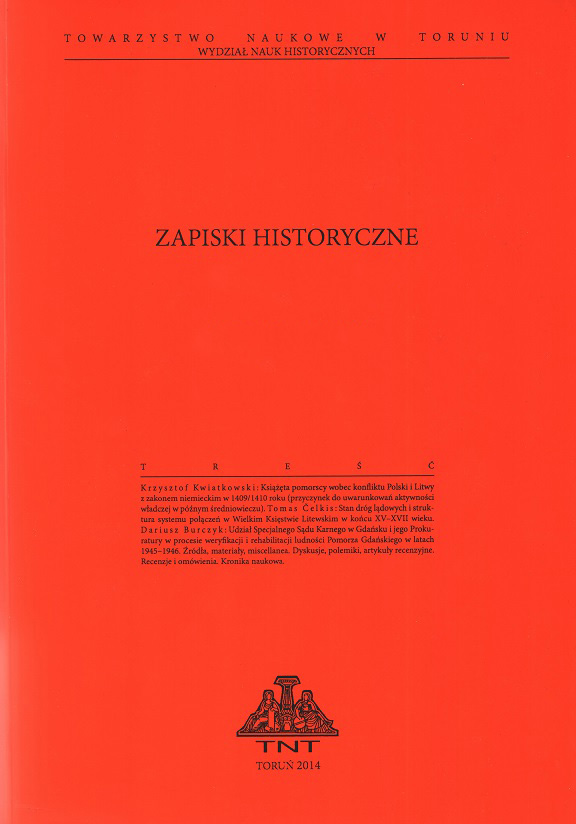Oblężenie i kapitulacja twierdzy Kokenhauzen (2–7 X 1700)
The Siege and Capitulation of the Kokenhausen Fortress
Author(s): Maciej TrąbskiSubject(s): Military history, Political history, 17th Century, 18th Century
Published by: Towarzystwo Naukowe w Toruniu
Keywords: the Great Northern War;Livonia;Kokenhausen;early modern military art;siege;capitulation;August II Wettin;Adam Heinrich von Steinau;the year 1700;
Summary/Abstract: The conquest of the Kokenhausen Fortress in October 1700 was the last act of an eight-month campaign conducted by the army of August II in the territory of Swedish Livonia. After the disgrace related to the premature abandonment of the siege of Riga (the main target of this campaign), it was a significant military and political success. Kokenhausen could have been a convenient bridgehead for the Saxon troops on the right bank of the Daugava River and a potential operational base to launch military operations in the Swedish province in the spring of the following year. At the same time, the conquest of this fortress made it possible to use the Daugava River to transport heavy cannons and ammunition from the Russian border to Riga. In addition, this success could be used for propaganda purposes. Tsar Peter I received the confirmation that August II had maintained the anti-Swedish alliance, thanks to which in Warsaw it was possible to strive for Poland’s joining the war against Sweden. In the publications devoted to the Great Northern War the information on this event is mostly scarce, and often contradictory, making the image of the siege and capitulation of the Kokenhausen Fortress look unclear and raise doubts. The reason seems to be the lack of information from a direct source, and the authors’ reliance on indirect sources (e.g. press coverage). Below, a new attempt to present the circumstances of the conquest of Kokenhausen by the army of August II will be presented; it was prepared primarily on the basis of a letter written in the Saxon army camp on 9 October 1700, probably by the court treasurer Atanazy Miączyński, and works of two French historians: Pierre Massuet – “Histoire des rois de Pologne, et du gouvernement de ce Royaume […]” and Jean-Baptiste de Parthenay – “History of the reign of the Polish king Frederic August II […]”, which come from the 1730s.
Journal: Zapiski Historyczne
- Issue Year: 83/2018
- Issue No: 3
- Page Range: 59-82
- Page Count: 24
- Language: Polish

